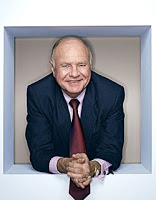

| Visitors Now: | |
| Total Visits: | |
| Total Stories: |

| Story Views | |
| Now: | |
| Last Hour: | |
| Last 24 Hours: | |
| Total: | |
Marc Faber Outlook for Gold
Marc Faber is one of the very successful investors on earth. He
recently explained his view on the monetary policies of the developed
regions in the world. Obviously he is no fan of the Keynesian way of
thinking which is applied by the central banks in the developed regions.
 The Keynesian policy considers easy money as a way out of economic
The Keynesian policy considers easy money as a way out of economic
recession and deflation. They argue that money creation smoothens out
the business cycle. In his presentation, Marc Faber demonstrates that
these kind of interventions achieve exactly the opposite: they make the
business cycles much more violent, create extreme fluctuations in
economic activity and result in far more financial volatility. In his
opinion, the essential problem is that the Keynesian way of thinking
tries to solve long term structural problems with short term fixes, with
an emphasis to create bubbles to help the economy. However, Mr Faber
notes that bubbles usually hurt the majority of market participants.
Based on the US Fed philosophy you can’t identify bubbles, but if
they burst you can take measures to support asset prices by flooding the
markets with liquidity (read: by “dropping dollar bills from an
helicopter” in order to prevent deflation). In line with that way of
thinking, the Fed has slashed interest rates and created liquidity over
the last 30 years on a continuing basis.
“Nationalism will emerge. Healthier countries will not see fit to
spend their hard earned money to bail out their less responsible
neighbors.”
Marc Faber believes that these policies have one big problem: central
banks simply cannot determine what will happen with the money that is
created. The key point is that inflation does not necessarily occur in
wage inflation or in consumer prices. The additional liquidity however
can create unpredictable sorts of inflations. For instance, it can
result in a housing boom in country X, or in employment wage inflation
in country Y, or in commodity price inflation in country Z. Furthermore,
not every price increase will occur at the same rate, with the same
intensity, at the same time. Those are the “unintended consequences” of
money printing, which Marc Fabers discusses in detail with a lot of
examples in his presentation.
“High monetary inflation brings distortions in the price mechanisms
and volatility.” One of the examples Mr Faber used in his presentation
is the Mexican deflation, in which the currency debased sharply against
eg the US dollar between 1979 and 1983. From the lows in 1983 till its
highs in 1988, the Mexican equity market in US dollar increase 44-fold!
Marc Faber his conclusion: money printing brings more and
unpredictable volatility. We saw a major low in equities in March 2009
which we probably won’t see again because “every drop” comes with a new
round of QE. Going forward, he believes that owning GOLD is a must for
every individual and investor. Gold is not in a bubble as we haven’t
seen rapid acceleration of prices (as an example, look back at 1979
where the gold price doubled in 3 months).
Source: Marc Faber Believes That Owning Gold Is A Must
Contrarian Investor Dr.Marc Faber is an international investor known for his uncanny predictions of the stock market and futures markets around the world.
2012-12-07 20:42:00
Source: http://faber-blog.blogspot.com/2012/12/marc-faber-outlook-for-gold.html
Source:


